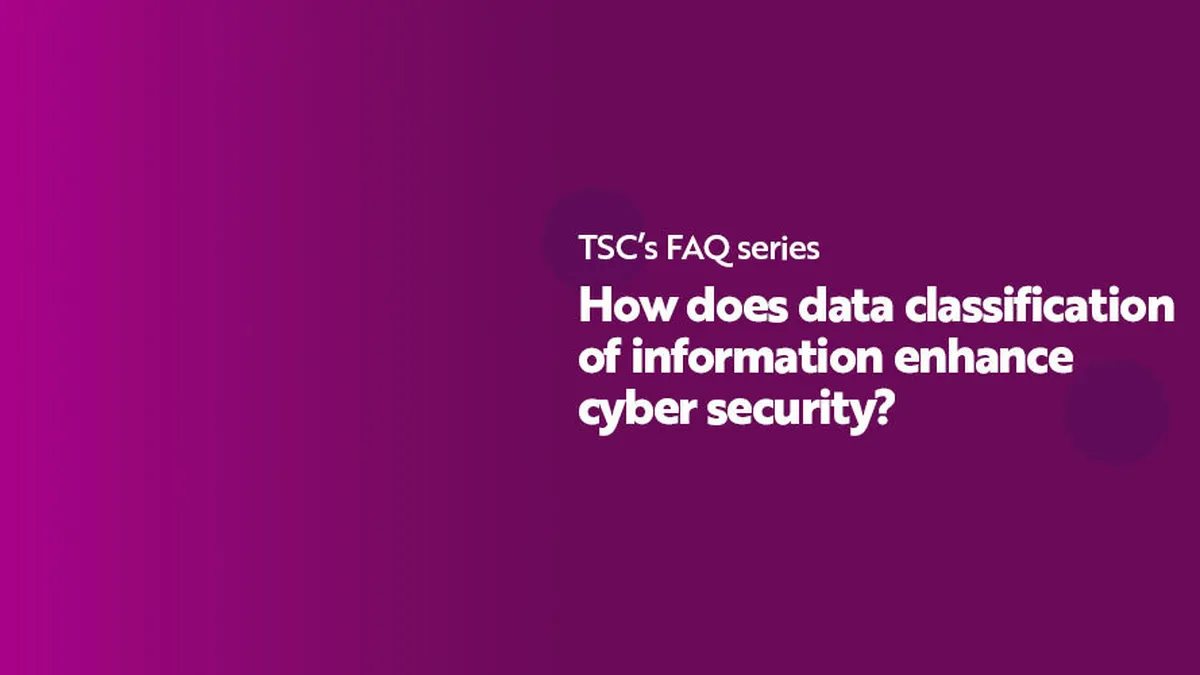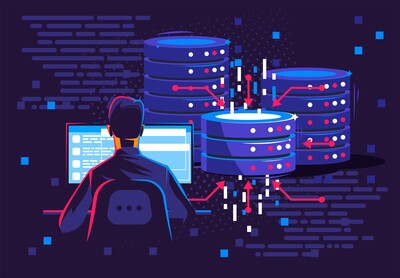
- Employee awareness
- 5 min read

Data classification is a critical component in fortifying an organisation's defences against cyber-attacks – simply put, data classification must be a part of your cyber security strategy … it is fundamental.
Many already understand the importance of data classification but let us explore the significance of data classification in enhancing cyber security and in providing valuable insights for decision-makers and employees alike. With cyber security fundamentals like this, we must reiterate, repeat, and ensure our cyber security baseline is consistently rising with each passing year.

Data classification is the process of categorising and labelling data based on its sensitivity and importance to the organisation – in a bid to compartmentalise and organise data. This categorisation also enables organisations to prioritise their data protection efforts, allocating resources where they are needed most, whilst avoiding unnecessary costs and time wasting. Typically, data can be classified into categories such as public use, internal use, confidential, or restricted. Some organisations opt for classifying data depending on the type of data it is, but the form classification takes is heavily dependent on the industry said organisations operate in.
Many organisations will use data classification to manage and protect sensitive information like Personally Identifiable Information (PII) whilst healthcare organisations will use data classification regarding Protected Health Information (PHI).
Data classification is commonly understood to take three forms. Let us run through them:

The data classification process can be boiled down to:

While implementing data classification is a crucial step in enhancing cyber security, it is equally important to support these protocols by relaying to employees the significance of their roles in maintaining a secure environment. Adjacent training programs should focus on:
Recognising phishing attacks: Employees should be educated on how to identify and avoid phishing attempts, which often serve as entry points for cybercriminals in their bid to infiltrate your network and grab your data.
Secure data handling: Training should emphasise the proper handling of classified data, including guidelines for storage, transmission, and disposal, reducing the risk of inadvertent data exposure.
Device security: Employees should understand the importance of securing their devices and practicing good cyber security hygiene, such as using strong passwords and enabling multi-factor authentication.
By implementing a robust data classification framework and accompanying it with comprehensive training and awareness programs, cyber security leaders, information security professionals and employees can collectively strengthen their defence against evolving cyber threats.
In 2024, data classification and cyber security education remain integral to maintaining a resilient and secure organisational environment.
Partnering with a trusted cyber security training and awareness company, such as The Security Company Ltd. (TSC), is crucial. With 25 years of experience, TSC specialises in enhancing security behaviours, fostering a robust security culture, and raising awareness of threats and risks across global organisations.
The dynamic nature of cyber threats necessitates a comprehensive and adaptive cyber security strategy for UK law firms. By understanding the evolving threat landscape and investing in robust training and awareness initiatives, decision-makers can fortify their organisations against potential risks and cyberattacks.
At The Security Company, we specialise in boosting cyber awareness, targeted training, customised projects and role-based solutions. Through our tailored subscription services, targeted and customised eLearning and awareness materials and our behavioural assessments, we're committed to helping organisations like yours instil long-term, security-conscious behaviours.
Our method is distinct. We begin by diving deep into your team's current mindset, pinpointing lax behaviours, security gaps and departments in need of focus and attention. From there, we craft tailored solutions that encourage better cyber practices from your employees. With comprehensive training and seamless integration into your current systems, we're here to fortify your team against modern cyber threats and be your trusted cyber security and awareness partner.
Ready to take the next step?
We can help you to formulate an effective and comprehensive cyber security training and awareness program for your organisation year-round and be your dedicated partner for employee behaviour change and, ultimately, security culture change.
Do not hesitate to contact us for further information.



© The Security Company (International) Limited 2023
Office One, 1 Coldbath Square, London, EC1R 5HL, UK
Company registration No: 3703393
VAT No: 385 8337 51


